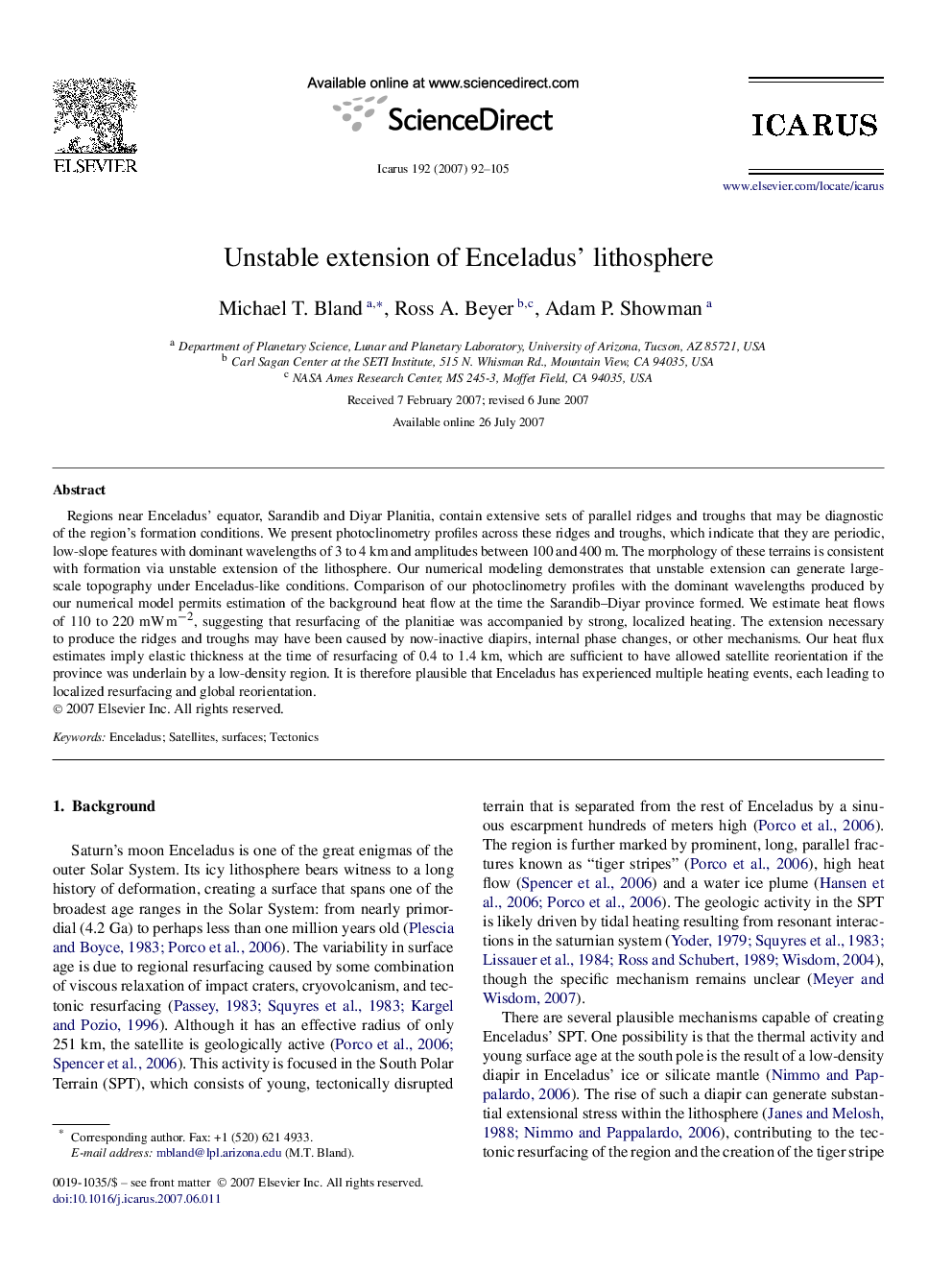| Article ID | Journal | Published Year | Pages | File Type |
|---|---|---|---|---|
| 1775446 | Icarus | 2007 | 14 Pages |
Abstract
Regions near Enceladus' equator, Sarandib and Diyar Planitia, contain extensive sets of parallel ridges and troughs that may be diagnostic of the region's formation conditions. We present photoclinometry profiles across these ridges and troughs, which indicate that they are periodic, low-slope features with dominant wavelengths of 3 to 4 km and amplitudes between 100 and 400 m. The morphology of these terrains is consistent with formation via unstable extension of the lithosphere. Our numerical modeling demonstrates that unstable extension can generate large-scale topography under Enceladus-like conditions. Comparison of our photoclinometry profiles with the dominant wavelengths produced by our numerical model permits estimation of the background heat flow at the time the Sarandib-Diyar province formed. We estimate heat flows of 110 to 220mWmâ2, suggesting that resurfacing of the planitiae was accompanied by strong, localized heating. The extension necessary to produce the ridges and troughs may have been caused by now-inactive diapirs, internal phase changes, or other mechanisms. Our heat flux estimates imply elastic thickness at the time of resurfacing of 0.4 to 1.4 km, which are sufficient to have allowed satellite reorientation if the province was underlain by a low-density region. It is therefore plausible that Enceladus has experienced multiple heating events, each leading to localized resurfacing and global reorientation.
Keywords
Related Topics
Physical Sciences and Engineering
Earth and Planetary Sciences
Space and Planetary Science
Authors
Michael T. Bland, Ross A. Beyer, Adam P. Showman,
